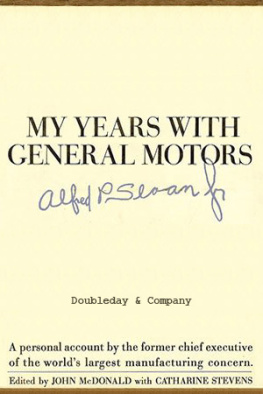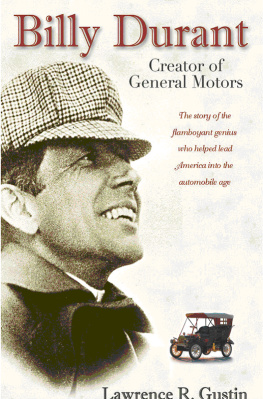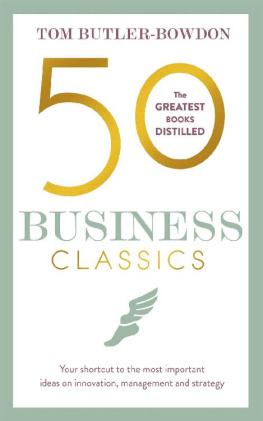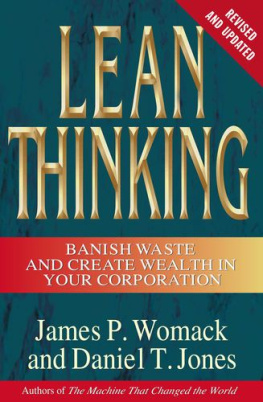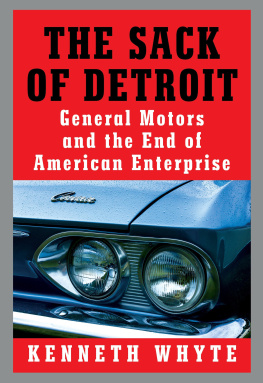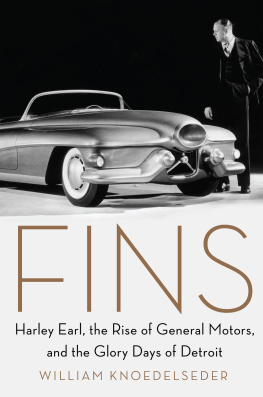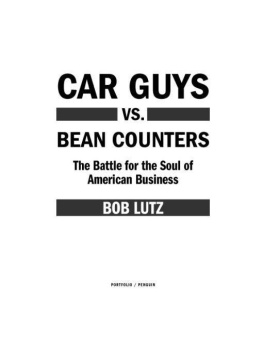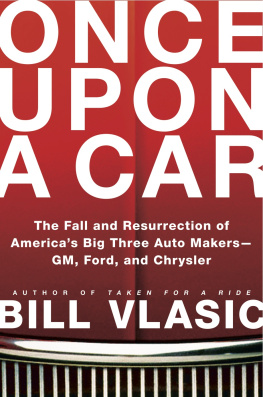MY YEARS WITH GENERAL MOTORS
by
Alfred P. Sloan, Jr.
Edited by John McDonald with Catharine Stevens
Garden City, New York
Doubleday & Company, Inc.
1964
Preface
That this book tells the story of General Motors in good part from my point of view is reasonably justified, I trust, by the circumstance that, as chief executive officer of the corporation for twenty-three years, and as a member of the board and a participant in its committees for forty-five years, I have been situated at the focal point of major policy making and administration. I trust, too, that the use made of materials from the past, which I either wrote or was responsible for, is justified for a similar reason. They either made or influenced policy and thereby bear a relation to the events of history. This approach to the book made it necessary to do a substantial amount of research, and it should not be surprising therefore that considerable collaboration was required.
I am indebted first of all to John McDonald of Fortune magazine, who worked closely with me in conceiving the book and in helping me to set down on paper what I know about General Motorsincluding, I might say, many things that I did not know, or had forgotten, when we began this project a number of years ago. I asked Mr. McDonald to work with me, and the editors of Fortune kindly granted him a leave of absence. Our first intention was to write a series of essays on American business with special reference to General Motors. As we got into a study of the facts, the project grew far beyond our original concept. We felt compelled, stage by stage, to stay with it to the end. The designation of Mr. McDonald as editor, which he chose, is broadly defined as I have indicated. Mr. McDonald's scholarship, craftsmanship, imagination, professional standards, and understanding of business strategy made possible the creation of this book.
I am indebted equally to Catharine Stevens, who has served as close associate to me and Mr. McDonald from the beginning. We were fortunate to receive the benefit of her spirit and intelligence and her versatile capabilities in organizing and managing a project of such magnitude and complexity. She was, you might say, as well, our editor. John, Catharine, and myself were the motivating force that kept the work in motion to completion. And we had help from other quarters.
To our editorial and technical assistants Felice Faust, Barbara Mullen, and Mary Ross, I give my admiration and thanks for their loyalty and high performance over the long period of their service on the project. I also wish to thank Doris Foster, Lynne Goree, and Margaret Breckenridge for their fine contributions.
To Alfred D. Chandler, associate professor of history, Massachusetts Institute of Technology, I am indebted for his assistance as our consulting historian and research associate. One of our major studies of the evolution of General Motors was most creatively carried out by him, and he has given his good mind to reviewing successive drafts of the manuscript.
From time to time in one place or another I have called upon a number of professional talents. Among those whose contributions are importantly reflected in the book are Daniel Seligman of Fortune, whose editorial skill and judgment helped to solve a number of thorny problems; and William Whipple, who gave fine editorial assistance throughout the book.
I want to record my thanks for the substantial aid of Sanford S. Parker of Fortune, who applied his powers of economic analysis and editorial organization to several areas of study, notably the automobile market and its history.
I am also grateful for the special assistance of Charles E. Silberman of Fortune; Franc M. Ricciardi, formerly of the American Management Association, now of Monroe Calculating Machine Company (Litton); Nathan Glazer, the sociologist; Louis Banks of Fortune; Ruth Miller, formerly of Fortune; Francis Wilson of John Wiley & Sons; and Sidney S. Alexander of the Massachusetts Institute of Technology; and for the interest of Jason Epstein. Mary Grace of Fortune gave her meticulous eye to reviewing the manuscript, and Ralph Stein, author of Sports Cars of the World, kindly advised us with his special knowledge of early automobiles. The distinguished photographer Walker Evans was our picture editor.
Although this book represents my own personal views and is not a corporation matter, I am indebted to all the divisions and the general offices of General Motors for their co-operation. The number of individuals is so large that I can only salute them here as a group and send each of them my warm appreciation of their valued personal contributions to my effort. Among many old friends and associates whom I consulted are Donaldson Brown, the late Harlow H. Curtice, Harley J. Earl, Paul Garrett, the late Richard H. Grant, Ormond E. Hunt, Charles Stewart Mott, the late James D. Mooney, John L. Pratt, Meyer L. Prentis, John J. Schumann, Jr., the late Edgar W. Smith, the late Charles E. Wilson, Walter S. Carpenter, Jr., the late George Whitney, and Henry C. Alexander.
Quite a number of people in different walks of life corresponded with me or came to see me to assist with one matter or another that came up in the book. I wish especially to thank Win Murphy, formerly secretary to W. C. Durant, for a number of recollections going back before 1920; Frank A. Howard for helpful talks on the evolution of concepts of research; William Zeckendorf for a conversation in which he gave me some inspiring thoughts on Mr. Durant; Eddie Rickenbacker for his recollection of the sale to him of Eastern Air Lines; the late James H. Kindelberger for kindly reviewing a portion of the text dealing with our interest in North American Aviation; Dr. Arnold J. Zurcher for valued comments; Hedley Donovan for wise observations on our earliest manuscript; and my brother Raymond for reading and commenting on the entire book.
With all that we have done in research and checking, in our effort to cover the subject accurately, we recognize, as everyone who researches and writes must recognize, the limits of human visibility. I can only say we have done the best we could to present an accurate picture. Although the number of persons who assisted me is large and many of their contributions are directly reflected in the book, I am of course personally responsible for the conclusions and opinions expressed here and for the book as a whole.
Alfred P. Sloan, Jr.
New York City
October 1963
Introduction
I have undertaken in this book to give an account of the progress of General Motors. There is much to say about the world's largest private industrial enterprise. Its history covers the present century and many parts of the earth, wherever there is a road to travel. It involves a good deal of the modern development of the engineering arts. Tangibly, the corporation is represented in the market by Chevrolet, Pontiac, Oldsmobile, Buick, Cadillac, and GMC Truck & Coach, jointly the producers of about half the passenger cars and trucks manufactured in the United States and Canada today. Our overseas operationsVauxhall in England, Adam Opel in Germany, General Motors-Holden's in Australia, and our manufacturing plants in Argentina and Brazilproduced in 1962 about one tenth of the passenger cars and trucks made outside the United States and Canada in the free world. The corporation also produces a substantial quantity of the world's locomotives, diesel and gas-turbine engines, and household appliances. Since General Motors is mainly a producer of automotive productsabout 90 per cent of current civilian business I have stayed for the most part in that area. I have, however, given separate chapters to the nonautomotive area and to General Motors' role in war and defense.

